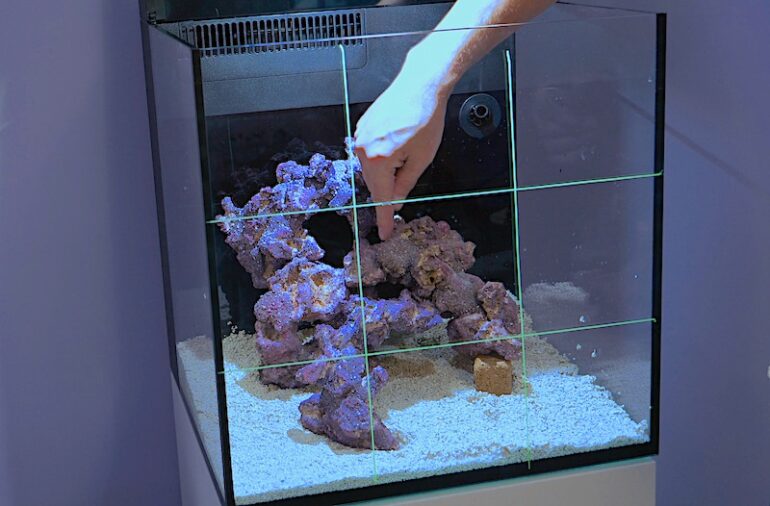The reef aquarium hobby has grown so much that it’s never been easier to set one up, although a deluge of information can make it hard to know where and how to start. In an effort to give our readers and viewers a point of reference we’ve produced a mini series of videos showing the basics of how to set up a reef aquarium, in one day no less.
In our previous installment we went over some of the basics of reef aquarium keeping, but focused on the basic unboxing, and setup of a Red Sea Max Nano. With a good foundation of a reef tank in place, including the stand, tank. light, and return pump installed, the next step is to aquascape the aquarium.
We generally try to dissuade new reefers from using any sand when starting out their tanks, but since we want to have this tank up and going in one day we used twenty pounds of CaribSea Arag-Alive to help kickstart the biological cycle. A similar mass of live rock was used to create the aquascape in this 18 inch, twenty gallon cube aquarium. The extremely gnarly and bumpy nature of CaribSea LifeRock practically aquascapes itself – it doesn’t take too many attempts to find an orientation between two rocks to lock them into place.
Our number one recommendation when aquascaping any tank is to scape with your eventual corals, and not with the rock. When starting a reef tank that is almost empty of life you might be tempted to ‘fill’ the tank with rock, since this is all you have to start, but it’s important to exercise restraint, preserve the open spaces and leave plenty of room open for corals down the road.
While the ‘scape might seem rudimentary now, we assure you that it turned out quite excellent once we finally added some corals. In our next episode we’ll be deep diving into the two most important parameters of keeping a healthy, successful reef tank, and that is done by achieving a proper salinity and temperature.



